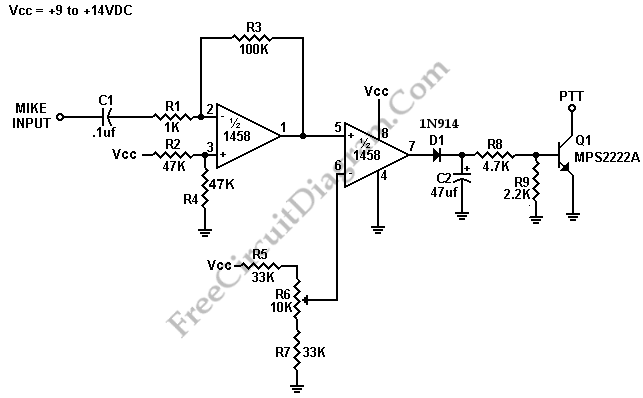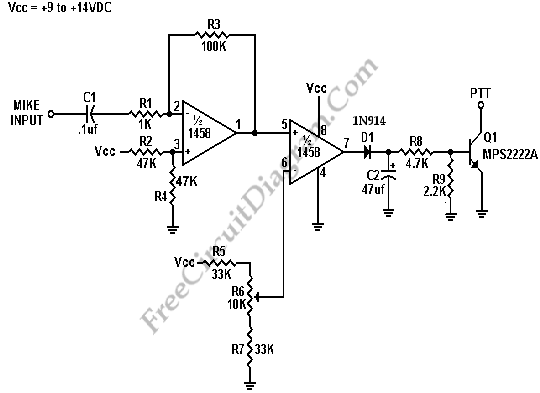Basic Vox Circuit Controls PTT

They were missing a VOX if we are take a look at some of the budget priced HF transceiver. It would certainly be nice to have VOX capability although most of these budget priced transceivers performed admirably. The figure below show us a basic VOX circuit which will perform very well once the VOX level is set correctly. This is a very low cost circuit and you can find all parts at your local Radio Shack store.
The circuit below consists of the 1458 IC which is really two 741 op amps in a single package. To amplify the mike audio, we use hte first op amp. The second op amp is used as a comparator. This comparator is designed to saturate a switching transistor during periods of moderate mike audio. The necessary delay before unkeying the PTT is provided by capacitor C2 which holds a small charge when the second op amp goes high. For the particular voice or microphone being used, variable resistor R6 sets the desired VOX level and should be adjusted. We’ll need some practice if we are using a VOX circuit for the first time. Don’t use a microphone with excessive gain unless you have a very quiet household. Since the audio from the transceiver’s speaker could key the transceiver, it is also a good idea to use headphones. Increase R8 to 10K if you would like to increase the delay time. Decrease C2 to about 22uf if you would like a little less delay. Make sure that the microphone is connected to both the VOX circuit as well as to the mike input on the transceiver. Failure to do so will result in the rig being keyed without any transmitted audio. Connect the PTT to collector of Q1 in the circuit. [Source: Radio Amateur Society of Norwich]
